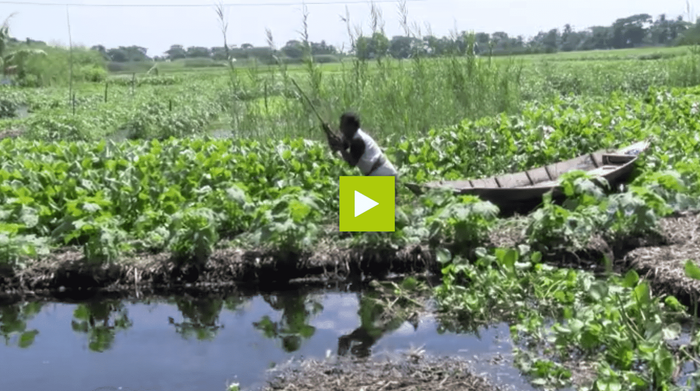Crops need water to grow but in many parts of the world, the land is flooded for a long time. We can grow crops on floating gardens or beds made of rotting vegetations that serve as compost.
These beds can be made on lakes, rivers and seasonal bodies of water and with floating beds, we can get high yields without using chemical fertilisers and pesticides. To make a floating garden, you need a boat, long bamboo pole and a stick with a hook. Begin by selecting an area with at least 1 metre water deep and with plenty of water hyacinth during rainy season. Place bamboo stick on water hyacinth, pull the water hyacinth from both sides to the bamboo stick and compact it with your feet.
Construction on water
Place the leaves of the water hyacinth facing towards the centre and the roots facing up for faster decomposition. Add water hyacinth until the raft is strong enough. Remove bamboo stick from the bottom for re use and leave the mass to settle and shrink for 7 to 10 days and add 1 more load of hyacinth to the bed.
As you begin making the floating garden, also begin raising your compost in compost balls. These are made from compost from previous decomposed water hyacinth by draining water from the compost, and then balls are made into which seeds are put and covered. The seeds germinate in 2 to 3 days. Transplant after after 10 days of emergence to floating bed.
Planting on water
Make planting pits at an interval of 25cm, place some compost into these pits and add the balls with the seedlings. After 15 days, chop compost on floating bed edge and put on it on the bases of every plant to keep plants straight and add nutrients.
Water the floating bed if there is continuous sunshine and the beds look dry. Vegetables grown on floating bed include Okra, cucumber, tallow gourd, yard long beans ,tamarack and amaranthus.
The major challenge in floating beds are rats however, the benefits out way the challenges. At the end of a g rowing season, move the bed to shallow water, break it, spread it over the crop land and keep some compost to make balls net year.



















